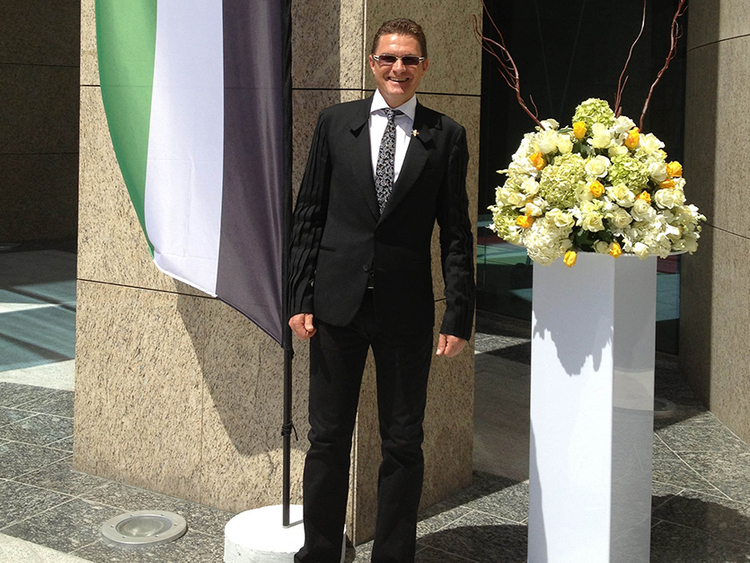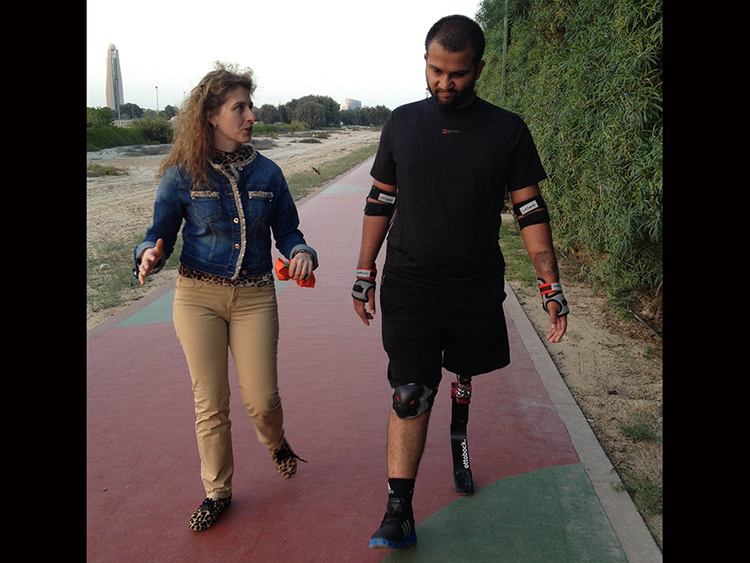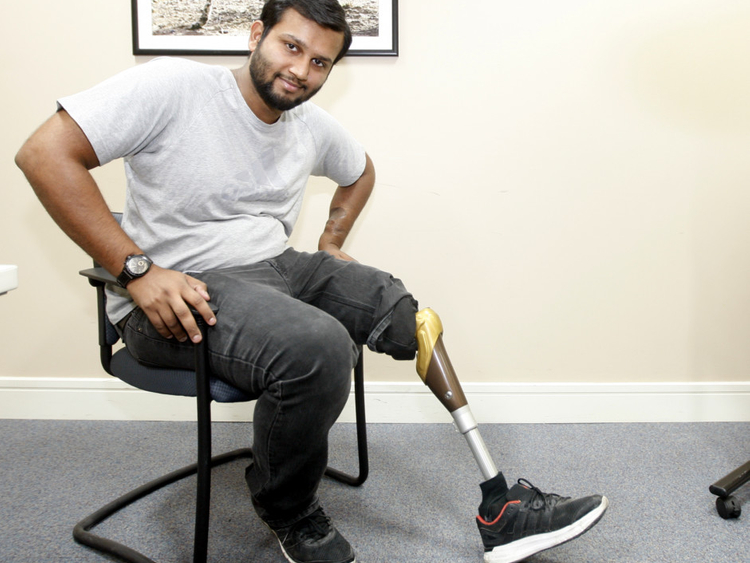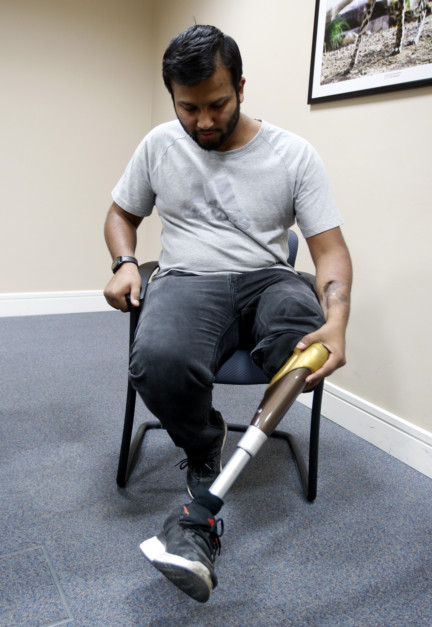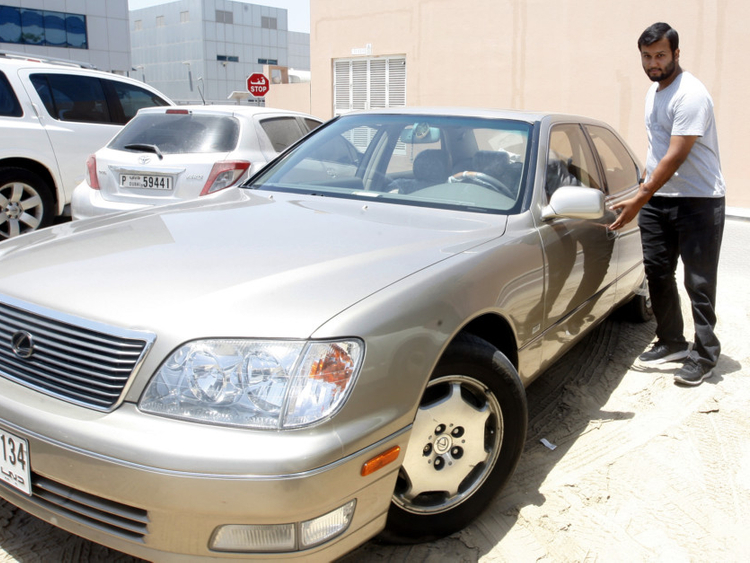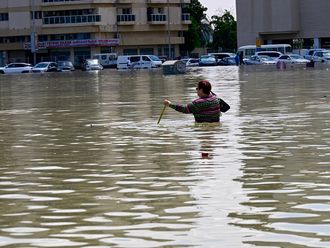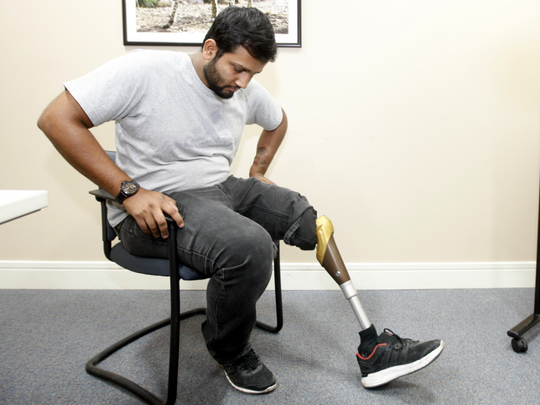
Dubai: After being in a coma for 11 days, Qamar Mohammad woke up to a life of uncertainty and seemingly insurmountable challenges.
One of his legs had been amputated.
Anxious and confused, the 25-year-old Pakistani expatriate was unsure about what the future held for him, but he refused to lose hope.
Mohammad, a technician in the aviation sector, met with a motorcycle accident on December 9, 2012. The incident happened near Al Ghusais while he was heading to work at 5.45am. A van that jumped a red light to take a U-turn crashed into Mohammad. Severely injured, he lost consciousness on the spot.
Mohammad regrets speeding and riding a motorcycle without his parents’ knowledge since they were against the idea.
“I was at that age when you just want to do what’s on your mind. My parents never knew I owned a bike. I had been riding it for five months till the day of the accident, he said.
It was the thrill of biking that drove Mohammad to buy a motorcycle against his parents’ wishes. “I once rode my friend’s bike and felt the high acceleration and braking. It was then that I decided to buy one and park it in a nearby building so that my parents would not find out,” he said.
However, during the month and a half he spent at Rashid Hospital, he witnessed the pain his parents had to go through every time they saw him depressed. “That is what hurt the most,” he said.
Once he was discharged, Mohammad resolved to do more than he did with two legs.
“I was in shock when I realised that I no longer have a left leg, but I slowly transitioned into a state of acceptance. I decided to look at my options,” he said.
Mohammad went through rehabilitation and now has an electronic prosthetic leg.
“I knew my life would be different, but it’s all about knowing that you will have to adjust to new things and acknowledge new limits. For example, I walk less than before now. I used to love running, swimming and also climbing. I was a great swimmer, but now my movement has changed,” he said.
Mohammad aspires to become an aviation engineer. He also manages his father’s garage in Sharjah and plans to get married in a year.
“After the accident, I realised that we should never take things to the extreme level and should always stay within the limits in order to stay safe. In the end what happens to you can affect your whole family because they also have to cope with it.”
Speaking about the prosthetic rehabilitation at German Limbtech Orthopaedic Technology at Dubai Healthcare City, Mohammad said that during the four months, he learnt how to walk again. He was taught how to use the prosthetic leg for short and long distances.
Mohammad completed his Haj with his mother in 2014 using his prosthetic leg and was stunned to know he was able to walk 16km a day without needing a wheelchair.
“It was demanding and I thought I wouldn’t be able to make it. I got encouraged after seeing worshippers walking around me and I’m happy I made it.
Mohammad said it took him a lot of training before going to Haj. “I used to walk many kilometres a day at the park next to my house.”
“I was very inspired from different videos I saw of people living their life, running, and climbing using a prosthetic leg. I decided to look at the bright side because I know it could’ve been worse. I could’ve been paralysed and in a wheelchair, but now at least I can do what others can do. I’m happy I’m used to my new routine,” said Mohammad.
Mohammad now drives a car and is training in how to walk fast, ride bicycles, and use gym machines. He also prostrates to complete his prayers.
“My prosthetic leg is now part of my body and I’m used to it, I take it off before I sleep and put it on in the morning,” he said. “I feel like a different person now after the accident and I’m dedicating almost all my time to my family, who had to go through so much because of me,” he said.
How the prosthetic rehabilitation was done
Wendelin Lauxen, director of patient care and managing director at German Limbtech Orthopaedic Technology, explained to Gulf News the rehabilitation that Mohammad went through with Petra Stege, the prosthetic rehabilitation specialist.
Mohammad came in with his physician after recovering from an above the knee amputation and several wounds. Mohammad had fractured his right ankle, left arm in four different places and his lungs had ruptured. His hand was also fractured and he had lost a thick chunk of skin.
“In the first part of the treatment, we examined him and found that his stump was swollen. His right leg had lymphedema due to the fractures, so we couldn’t start with the prosthesis until everything was in good condition. Complex decongestive therapy was necessary before we continued with the treatment.”
Lauxen said that due to Mohammad’s young age and athletic body, he was classified under the high-mobility class, which made it possible for him to receive the C-Leg prosthesis, which is an electronic knee joint with many functionalities. People who are less active, he said, wouldn’t be able to get this type of leg.
“The rechargeable C-Leg has a battery life that lasts 48 hours. The second part was preparing the carbon fibre socket, which is the heart of the prosthesis. It was important to combine the complete components with a correct alignment and fitting,” he said.
The rehabilitation process included many hours of balance training, exercises, walking, physiotherapy and counselling.
“It’s normal for young patients to get into depression because they start thinking about how their movement has changed and what others will think of them. But Mohammad was very open and motivated. We helped him get used to different activities with the active foot we customised for him. He began walking using crutches and then got used to walking without them. We also trained him to get up in case he falls down, which is part of the overall training,” Lauxen said.


